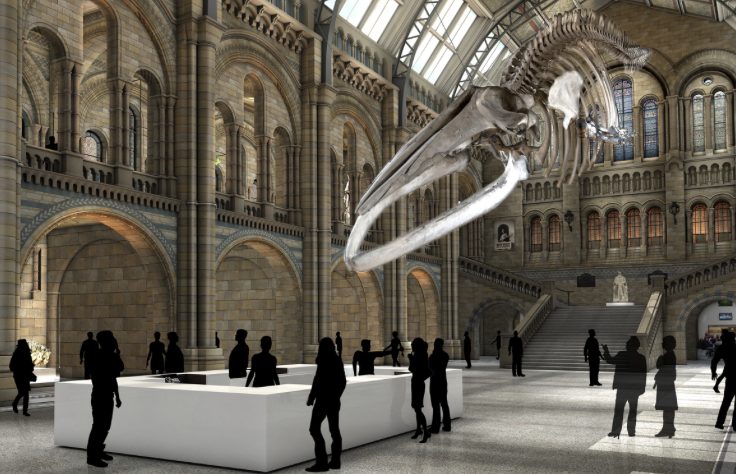When the Natural History Museum decided to replace its famous ‘Dippy’ the diplodocus exhibit with a new star exhibit- a real-life skeleton of a blue whale- design & engineering expertise from Lancashire provided a solution to balance all the elements.
Consulting engineers for the refurbishment of the 150 years-old Grade 1 listed Hintze Hall, SVM, aimed to revive, as far as possible, the original ventilation for the iconic, lofty hall, whilst taking advantage of technological developments to deliver the optimum internal environment for exhibits, the building fabric, and visitors. Thus, SVM utilised the expertise of Britain’s leading air movement specialist, Gilberts.
Based on CFD (computational fluid dynamic) modelling, Gilberts manufactured and supplied 24no of a bespoke version of its Mistrale Model A natural ventilation units, with a further 42no standard WHF50 high performance louvres to provide the required levels of fresh air intake and exhaust.
Each of the bespoke units was purpose-designed, using a combination of Gilberts’ WHF50 cassette with its VN75 ultra low leakage air volume control damper, to fit within existing window apertures and frames, and bolt together into specially-designed subframes, to avoid any need to fix into the existing terracotta surrounds.
The units also had to provide the appropriate flow of fresh air into Hintze Hall, without allowing any natural light to permeate through, and still look aesthetically pleasing; Gilberts thus devised a bespoke combination of internal K40 fixed bar grilles and non vision cores mounted on the rear of the units.
In a separate high level atrium, the original glass in the window frames could be removed; there, the glazing was replaced with Gilberts’ WHF50 louvres to provide high level exhaust of the ’used’ internal air.
SVM Director Paul Rushmer elaborated, “The project involved refurbishing the existing hall, and redesigning the space to incorporate additional galleries at ground, first and second floor levels. From the original design, natural ventilation openings were in place, to an extent, but needed restoring, and new building services had to be integrated alongside to deliver a balanced internal temperature all year round, regardless of summer peaks and winter lows.
“Conditions in Hintze Hall are crucial to the exhibits, and of course important to the visitors. We had to find a non-invasive solution for the historic space, which stabilised the temperature and humidity. The original building drawings used passive solutions. We have past experience of working with Gilberts, and felt its dampers were particularly appropriate to helping develop a bespoke, sympathetic solution.”
Gilberts’ core Mistrale 50 Model A cassette is deliberately lightweight and slimline, to be beaded discreetly into window or wall. The insulated motorised volume control damper is a unique design that offers automatic, accurate and stable airflow, with one of the lowest air leakage rates (<5m3/hr/m2) and U values (<1W/m2/K) on the market.
The WHF50 louvres are part of Gilberts’ high performance louvre range, whose patented design offers a simple single bank louvre assembly with 99% weather protection. The blade is a unique profile, proven to deliver a good free area ratio with minimal pressure resistance.
Gilberts is the UK’s leading independent air movement specialist. Alongside its comprehensive range of grilles, louvres and diffusers, it has the ability, in-house, to design, manufacture, and test bespoke solutions to meet specific project requirements. It also has one of the most technically-advanced in-house test centres in the country- which it designed and built using internal resources- at its 90,000sq ft Blackpool headquarters.

